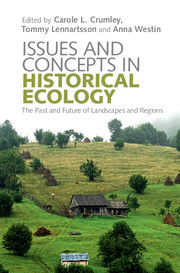Part II - Approaches: Concepts and Methods
Published online by Cambridge University Press: 10 November 2017
Summary

- Type
- Chapter
- Information
- Issues and Concepts in Historical EcologyThe Past and Future of Landscapes and Regions, pp. 143 - 272Publisher: Cambridge University PressPrint publication year: 2017

